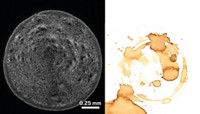Advertisement
Grab your lab coat. Let's get started
Welcome!
Welcome!
Create an account below to get 6 C&EN articles per month, receive newsletters and more - all free.
It seems this is your first time logging in online. Please enter the following information to continue.
As an ACS member you automatically get access to this site. All we need is few more details to create your reading experience.
Not you? Sign in with a different account.
Not you? Sign in with a different account.
ERROR 1
ERROR 1
ERROR 2
ERROR 2
ERROR 2
ERROR 2
ERROR 2
Password and Confirm password must match.
If you have an ACS member number, please enter it here so we can link this account to your membership. (optional)
ERROR 2
ACS values your privacy. By submitting your information, you are gaining access to C&EN and subscribing to our weekly newsletter. We use the information you provide to make your reading experience better, and we will never sell your data to third party members.
Education
Newscripts
James Bond’s Alcoholic Ways, Icicle Ripples
by Jyllian Kemsley
January 6, 2014
| A version of this story appeared in
Volume 92, Issue 1

James Bond, the fictional British Secret Service agent created by writer Ian Fleming, is famous for his physical prowess, womanizing, and his love of martinis—shaken, not stirred. A team of British researchers has now analyzed just how much Bond drank and questions whether he could have performed as described.
The research group, led by Patrick Davies of Nottingham University Hospitals, read 12 Bond novels by Fleming, noting when 007 drank alcohol and how much he consumed (Br. Med. J. 2013, DOI: 10.1136/bmj.f7255).
Combining Wikipedia cocktail recipes with standard U.K. National Health Service (NHS) alcohol definitions, the researchers computed the number of units of alcohol Bond consumed. A vodka martini, for example, contains three units of alcohol, whereas a bottle of wine contains nine. In some cases, Davies and colleagues had to estimate: A “visit to a bar” was assigned 10 alcohol units, and “serious drinking” or “got drunk” was assumed to involve 20 units.
Across all days in the novels, Bond averaged 65 alcohol units/week. Eliminating periods when Bond was unable to consume alcohol, for reasons such as hospitalization or incarceration, he averaged 92 units/week. To avoid long-term health effects of alcohol, NHS recommends a maximum of 21 units/ week.
One of the effects Bond may have experienced is alcohol-induced tremor affecting his hands, perhaps leading to his preference for shaken martinis, the researchers suggest. Overall, “Despite [Bond’s] alcohol consumption, he is still described as being able to carry out highly complicated tasks and function at an extraordinarily high level,” Davies and colleagues write. “This is likely to be pure fiction.”
Not so fictional are icicles that form from melted snow or ice running off a roof, cliff, or other surface. If the resulting water runs off into an environment in which the temperature is below freezing, it will freeze. Icicles grow from continued runoff. They typically form ripples, although physicists have struggled to explain the mechanism behind ripple formation.
Antony Szu-Han Chen and Stephen W. Morris of the University of Toronto have now identified a new piece to the icicle ripple puzzle: salt. After noting that icicles prepared in the laboratory from distilled water did not form ripples whereas icicles formed from tap water are rippled, they set upon a systematic study of water composition on icicle ripples (New. J. Phys. 2013, DOI: 10.1088/1367-2630/15/10/103012).
They found that adding as little as 20 mg NaCl/L of water created icicle ripples. The amount of salt doesn’t affect the distance between ripples—that stays constant at about 1 cm—but it does affect the speed of ripple growth and migration along an icicle. A small amount of salt leads to ripples migrating upward along an icicle. Higher concentrations result in what Morris describes as “more complicated” dynamics, with some ripples traveling downward.

As for the specific mechanism of ripple formation, that is still a bit of a mystery. It’s not that the salt changes the surface tension of the water; adding a surfactant doesn’t create icicle ripples. Morris says he suspects that the answer lies in the fact that the icicle growth surface is not a smooth crystal; rather, the water freezes into dendrites, or “little forests of treelike things” surrounded by still-liquid water. How salt ions affect growth of those forests and the macroscopic shapes they yield remains to be determined.
Jyllian Kemsley wrote this week’s column. Please send comments and suggestions to newscripts@acs.org.





Join the conversation
Contact the reporter
Submit a Letter to the Editor for publication
Engage with us on Twitter